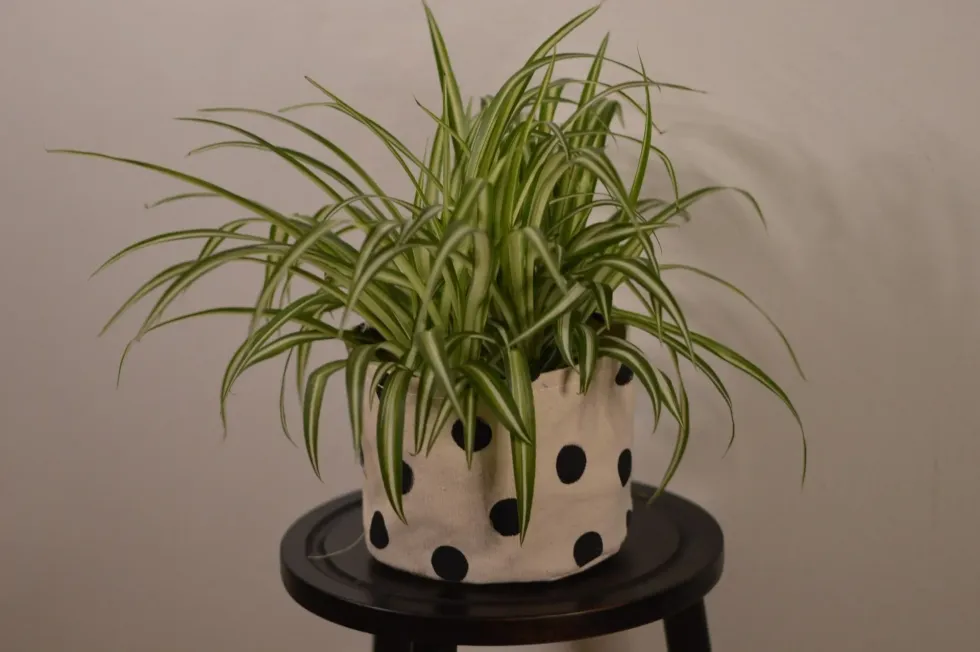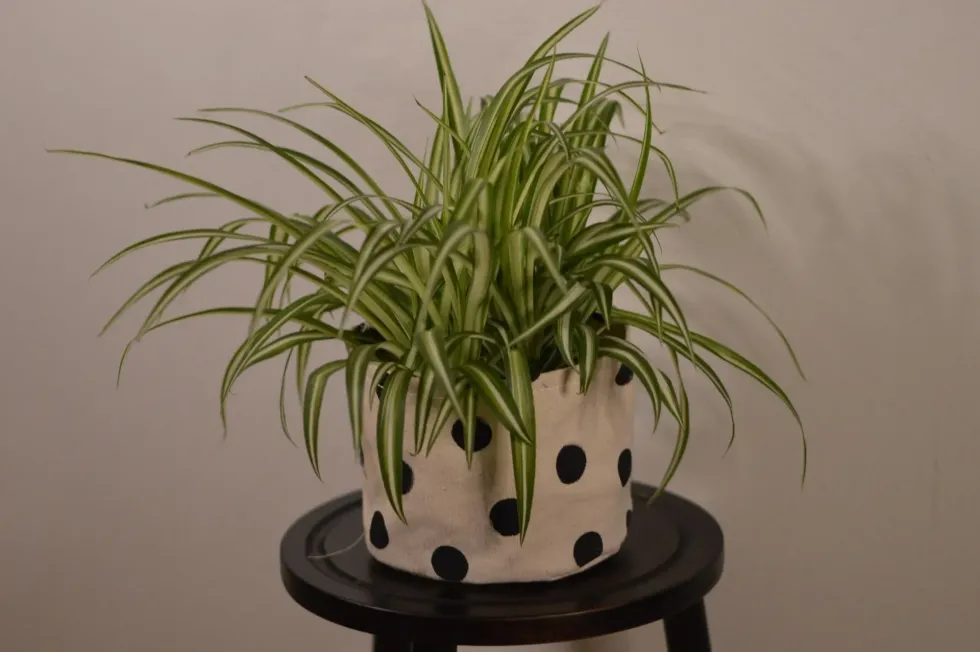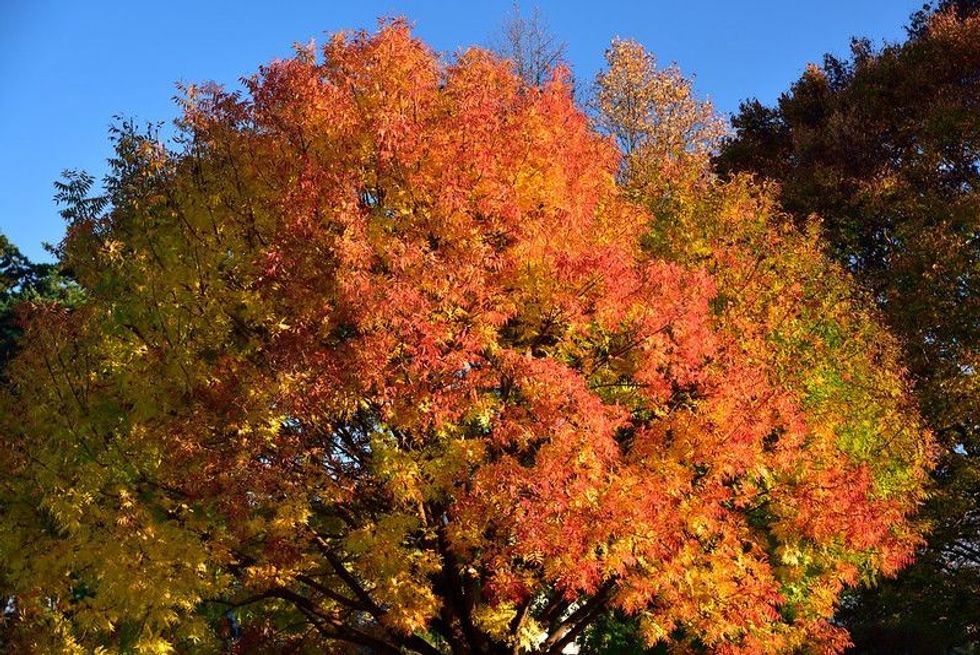The Spider plant (Chlorophytum comosum) is the most easy-to-grow plant as it does not need direct sunlight like other plants.
This plant can grow and flourish in a wide range of environments. It does not have any problems other than turning from darker green leaves to light green to brown.
These plants are native to southern Africa and the African Tropics. The plant is named because of the spider-like plant or spiderites that dangle down from the mother plant just like a spider on a web does.
They often start as small white flowers with a white stripe on the leaves. Using a bent paper clip in the soil, you can plant the main plant. They do not need any fertilizer and flourish well in spring with less watering.
Spider plants (Chlorophytum composeum) come in over 200 different varieties; however, they can be divided into two types: variegated and non-variegated. The hue and patterns on the leaves are the most noticeable differences between them. You may choose to select a single spider plant over the other based on where you'd like to put it.
There are many varieties of Spider Plants as they have evolved, like the variegated spider plant, reverse spider plant, and zebra spider plant (Chlorophytum laxum). Other spider plant varieties include Bonnie spider plant (Chlorophytum comosum), Hawaiian spider plant (Chlorophytum viridescens 'Hawaiian'), Chlorophytum capense, and Chlorophytum Bichetii.
Letting the plantlet stay connected to the mother plant is the best approach for growing spider plant spiderettes. Pick a good spiderette and set it beside the mother plant in a pot of dirt. Keep it adequately watered, and once it has established roots, you can separate it from the mother plant.
Spider Plant Classification
The scientific name of the Spider Plants is (Chlorophytum comosum). These plants belong to the Kingdom - Plantae, Phylum - Magnoliophyta, Class - Liliopsida, Order - Liliales, Family - Liliaceae, Genus - Chlorophytum, Clade - Angiosperms, Monocots, Subfamily - Agavoideae.
NASA has officially certified Spider plants to filter indoor air and eliminate 90% of airborne pollutants. It's a fantastic incentive to stock up on a couple of different kinds for your home.
Growth Requirements Of Spider Plants
The Spider Plant (Chlorophytum comosum) is one of the most flexible and easy-to-grow common houseplants or in the garden. It is an elegant small plant used everywhere, from a countertop to a mantle or as a hanging plant with its beautiful arching dark green leaves.
This plant is also famous for its excellent air purification properties, making it a suitable plant for any home.
Your Spider Plant may be able to survive lesser levels of direct sunshine, but it will grow quickly in bright indirect light.
When the top part of the soil is dry, water the Spider Plant. Fill the pot halfway with water and drain any water accumulated in the saucer via the drainage hole at the bottom. These plants do not need fertilizer to grow well.
The Spider Plant can do very well in low humidity conditions, but it will grow better in more humid environments.
The ideal temperature for this plant is around 40-80 F (4.44-26.66 C)for the daytime, and for the night, it should be over 50 F (10 C)
Except for scale mealybugs and insects, spider plants have few pest concerns. Leaf tip burn is a widespread condition with a variety of causes. Brown leaf tips can be caused by low humidity, salt accumulation, overly dry soil, or pollutants in tap water, and tip browning can be avoided using distilled or rainwater.
How To Take Care Of Spider Plants

To take care of the Spider Plant (Chlorophytum comosum) in a garden is very easy as they don't require direct sunlight. These are rough and tough plants, making them an excellent choice for gardeners who have just begun gardening. You can grow them without even having a green thumb!
These house plants need well-drained soil and very bright light to grow. They grow well in the spring. Water them thoroughly, but don't let them become too wet, which might cause root rot. Spider plants like to dry out in between watering. When looking for spider plants, consider that they prefer lower temperatures, approximately 55-65 F (13-18 C.).
Cutting spider plants down to the roots regularly can help them thrive. Repot spider plants only when their huge, fleshy roots are extremely apparent, and watering is difficult, as they enjoy a semi-potbound habitat.
Spider plants can also be replicated easily by dividing the mother plant or sowing the small spiderettes. They also attain good growth when used as a hanging baskets plant.
Characteristics Of Spider Plants
The leaves of this tree grow to be solid to green and also have various lengths of light yellow to white margins on them. The leaves are not flat; it's just that they appear folded from the middle.
These plants attain a length of around 12-15 in (30.48-38.1 cm) and have very thick and fleshy roots, which are evolved to store a good amount of water, making them survive even in harsh conditions.
The wiry stems are very long and have a height of 2 ft (60.96 cm) approx. Their leaves sometimes have tiny brown leaf tips in response to long uninterrupted nights and short days for three weeks.
Star-shaped and white color flowers grow at the end of these stems. Just after flowering, many more leaves are produced on stems that form small plantlets. When a flower is fertilized, it produces a three-angled capsule-type leathery fruit with flat black seeds.










